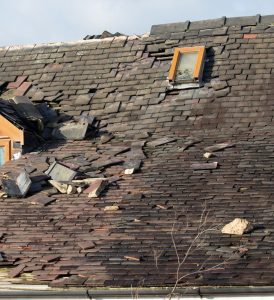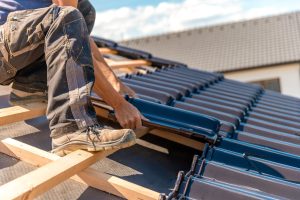If you are a homeowner, there is a good chance that you will need to know what a drip edge is at some point. They essentially help to direct water flow away from the fascia and to protect underlying roofing components such as roof felt. In this blog post, we will discuss what drip edges are used for and how they are installed.
What is a Drip Edge
Drip edges are metal flashing that is installed at the edge of the roof to help control the flow of water away from the fascia. Drip edges are typically made out of aluminium or galvanized steel, and they come in a variety of shapes and sizes. Drip edges are used to protect the underlying roofing components from water damage.
Drip edges are installed at the eaves and gables of the roof and they are usually fitted before installing the roofing shingles, depending on the type of roof required. Drip edges should extend beyond the width of the fascia board by at least 1/2 inch. The metal flange should be bent away from the fascia board at a 90-degree angle.
Purpose of Drip Edge
Drip edges serve an important purpose in roofing by helping to control the flow of water away from the fascia and preventing water damage to the roofing components.
It is important to install drip edges properly so that they can do their job effectively. Improper installation can lead to water damage and leaks, so be sure to consult with a professional roofer if you are unsure how to install them correctly.

Are Drip Edges Required?
No, drip edges are not required by the building code in all areas. However, they are highly recommended in order to help protect your roof from water damage.
If you live in an area with a lot of rainfall, it may be especially important to install drip edges to help keep water from seeping under the shingles and causing leaks.
Who should Install Drip Edge
If you think you need a drip edge installation, you should always use a professional roofer in your area to get the job done right. Drip edges should be installed properly in order to be effective, so it is best to leave it to the professionals.
If you are unsure whether or not your roof needs a drip edge, you can always consult with a professional roofing contractor in your area for more information.
Types of Drip Edge
There are primarily three types of drip edge. L, C and T – all of which are differentiated by their relative shapes. Drip edge is also available in a variety of colours to better match your home’s exterior.
L Drip Edge: The L Drip Edge has a flat bottom with two 90-degree angles on each side. This type of drip edge is typically used in commercial applications.
C Drip Edge: The C Drip Edge has a curved bottom and two 90-degree angles on each side. This type of drip edge is typically used in residential applications.
T Drip Edge: The T Drip Edge has a flat bottom with one 90-degree angle on one side and a 45-degree angle on the other side. This type of drip edge is typically used in residential applications.
Conclusion
Drip edges are important in roofing because they help control the flow of water away from the fascia and prevent water damage to the roofing components. Drip edges come in a variety of shapes, sizes and colours to better match your home’s exterior.
If you think you need a drip edge installation, be sure to contact Acorn Roofing in Blackpool for help, advice or quotes.




